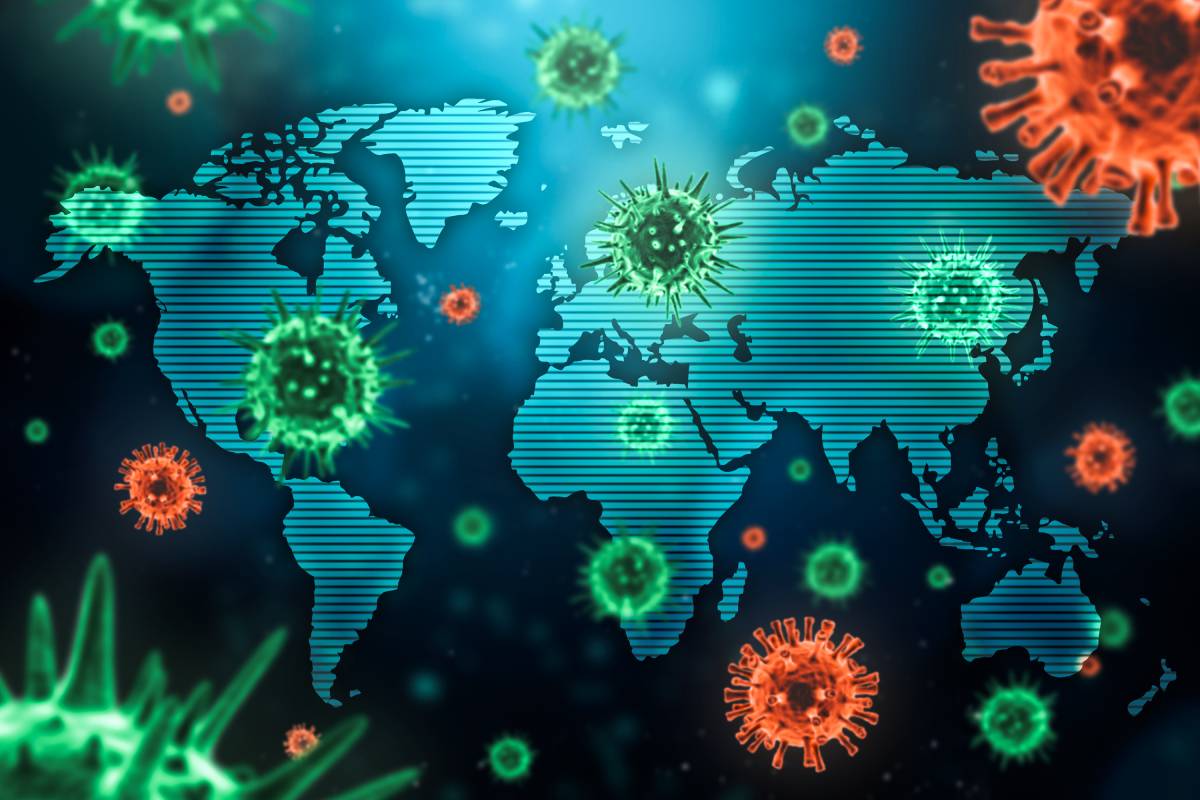Global Status of COVID-19

More than two years into the pandemic, COVID-19 continues to have a massive impact worldwide. On April 7, 2022, the World Health Organization reported more than 493 million confirmed cases of COVID-19 worldwide, which have produced about 6.17 million deaths [1]. Fortunately, vaccination rates continue to climb. Around the world, people have received an estimated 11.26 billion vaccine doses [1]. Nevertheless, the global status of COVID remains urgent as vaccination and treatment disparities continue to adversely affect lesser-resourced countries, suggesting that the end of the pandemic is still far away.
Recently, the highly infectious Omicron variant produced a spike in global case counts, but recent data suggests that countries are generally recovering from that sharp increase [2, 3]. However, caution is advised: A sub-variant of Omicron, known as BA.2, appears to be producing a surge in some parts of Europe and the United States [3]. Already, BA.2 has become the dominant form of the virus in the world due to its high transmissibility, but experts suggest that it is unlikely to trigger a lockdown scenario [3].
Despite diminishing global infection rates and relatively contained worries about BA.2, some countries are experiencing rises in coronavirus cases [2]. In Asia, Thailand, Vietnam, and South Korea have reported their peak infection rates since the beginning of the pandemic; China, too, is reporting thousands of new cases every day [2]. In Latin America and the Middle East, cases appear to be contained, for now [2]. Meanwhile, South Africa has recently seen a spike in infections [2]. Data about the rest of Africa is highly uncertain, given its low testing rates, but a WHO study recently suggested that as many as two-thirds of Africans have been infected by COVID-19 since the start of the outbreak [2, 4]. If this is true, it would indicate that Africa’s infection rates are one hundred times greater than previously reported [4].
As for vaccination, nearly every country in the world administers at least one kind of COVID-19 vaccine to its people [2]. 119 countries offer booster doses as well [2]. Unfortunately, just like testing, vaccination rates across the African continent are also low [2]. Only about 15% of people in Africa have been vaccinated, compared to 62% of people in the rest of the world [2].
COVAX, a global vaccine distribution program, seeks to reduce the global disparity in COVID vaccine access [5]. It operates by pre-purchasing large quantities of vaccines and then distributing them so as to give each country an equitable share, determined according to population size [5]. Nearly every country in the world has signed up for the program [5]. Supply issues, however, may impede COVAX’s ability to deliver on its promises [5].
Just like vaccination rates, disparity in access to treatments has also contributed to the disproportionate effect of COVID-19 on particular areas of the world [6]. One prominent example is Paxlovid, the oral antiviral produced by Pfizer [6]. The first 30 million doses are due to be available by July 2022, but they have already been purchased by high-income nations [6]. The UN-backed Medicines Patent Pool (MPP) may be able to increase lower-income countries’ access to the treatment [6]. Its recent agreement with Pfizer would give generic medicine manufacturers the ability to produce alternative versions of the drug and distribute them to 95 countries [6]. Still, generic versions likely will not reach the market for another year, and the MPP deal excludes 47% of the global population, suggesting that it is an imperfect solution [6].
Ultimately, even as infection rates appear to decrease, the unequal distribution of tests, vaccines, and treatments suggests that the effects of COVID-19 will continue to disproportionately impact disadvantaged countries for years to come.
References
[1] WHO, “WHO Coronavirus (COVID-19) Dashboard,” World Health Organization, Updated April 7, 2022. [Online]. Available: https://covid19.who.int/#:~:text=Globally%2C%20as%20of%208%3A46pm,vaccine%20doses%20have%20been%20administered.
[2] The Visual and Data Journalism Team, “Covid map: Coronavirus cases, deaths, vaccinations by country,” BBC, Updated March 29, 2022. [Online]. Available: https://www.bbc.com/news/world-51235105.
[3] T. Parker-Pope and K. Sheikh, “A New Wave of Covid-19 Is Coming. Here’s How to Prepare.,” The New York Times, Updated March 30, 2022. [Online]. Available: https://nyti.ms/3jgIqqL.
[4] E. Peltier, “Nearly two-thirds of Africans may have contracted the coronavirus, the W.H.O. says,” The New York Times, Updated April 8, 2022. [Online]. Available: https://nyti.ms/36Xi9v6.
[5] J. Beaubien, “What Is This COVAX Program That The U.S. Is Pouring Millions of Vaccines Into?,” NPR, Updated May 19, 2021. [Online]. Available: https://www.npr.org/sections/goatsandsoda/2021/05/19/998228372/what-is-this-covax-program-that-the-u-s-is-pouring-millions-of-vaccines-into.
[6] A. Danaiya Usher, “The global COVID-19 treatment divide,” vol. 399, no. 10327, p. 779-782, The Lancet, February 2022. [Online]. Available: https://doi.org/10.1016/S0140-6736(22)00372-5.
